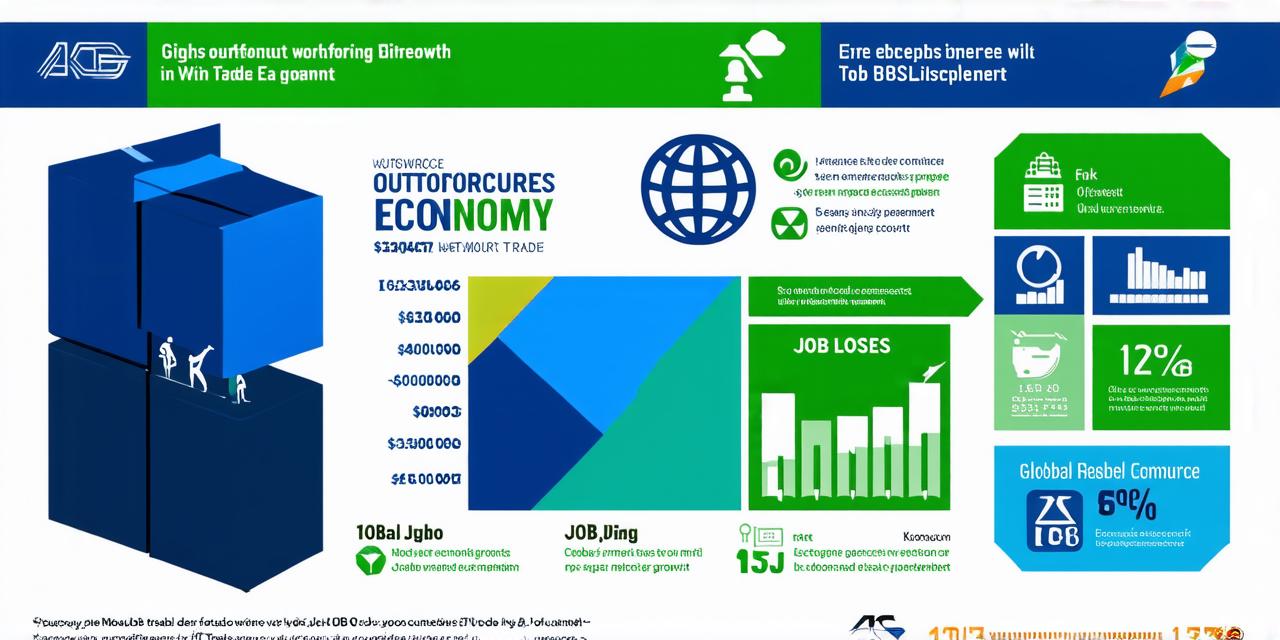What is offshore outsourcing in bpo
Offshore Outsourcing in BPO
Offshore outsourcing in BPO, or business process outsourcing, refers to the practice of hiring an external provider to perform tasks that are typically done by employees within a company. These tasks can include everything from customer service and accounting to human resources and IT management. In recent years, offshore outsourcing has become increasingly popular as companies look for ways to reduce costs and improve efficiency.
One of the main benefits of offshore outsourcing in BPO is that it allows companies to access a larger pool of skilled workers at a lower cost than hiring locally. This can be especially appealing for businesses in industries with high labor costs, such as finance or healthcare.

Additionally, offshore outsourcing can help companies gain access to specialized expertise that may not be available in-house. For example, a company that needs assistance with a specific software system might outsource the task to a provider who has experience working with that particular platform.
Another advantage of offshore outsourcing is that it can free up internal resources and allow employees to focus on more strategic tasks. This can be especially valuable for businesses with limited staffing or budgets. By outsourcing certain functions, companies can also improve their overall efficiency and productivity by reducing the time spent on administrative tasks and increasing the capacity of their operations.
One of the most common examples of offshore outsourcing in BPO is customer service. Many companies outsource their customer service operations to providers who have experience working with specific products or industries. This can help ensure that customers receive high-quality support and assistance, even if they are located in different parts of the world.
Another example of offshore outsourcing in BPO is IT services. Companies often outsource their IT needs, such as software development, network administration, and cybersecurity, to providers who have expertise in these areas. This can help businesses stay up-to-date with the latest technologies and ensure that their systems are secure and reliable.
Offshore outsourcing in BPO is not without its challenges, however. One of the biggest concerns for companies that outsource is ensuring that their data and intellectual property are protected. This requires careful vetting of potential providers and the implementation of strict security protocols to prevent data breaches or other security incidents.
Another challenge of offshore outsourcing in BPO is managing communication and collaboration between different teams located in different parts of the world. This requires companies to invest in effective communication tools and strategies, as well as to develop clear processes for managing projects and tasks across multiple locations.
Despite these challenges, many companies have found that offshore outsourcing in BPO can be a valuable tool for reducing costs, improving efficiency, and gaining access to specialized expertise. By carefully evaluating their needs and choosing the right provider, businesses can benefit from the advantages of offshore outsourcing while minimizing its risks and challenges.
Case Studies
One example of a company that has successfully implemented offshore outsourcing in BPO is XYZ Corporation, a software development firm based in the United States. XYZ had been struggling with high costs and limited capacity for several years, and they decided to outsource some of their development tasks to a provider located in India.
Within six months of implementing offshore outsourcing, XYZ was able to reduce its development costs by 30% while increasing its output by 25%. The company also benefited from the expertise of its Indian provider, who had experience working with specific software platforms that were critical to XYZ’s operations.
Another example of a company that has leveraged offshore outsourcing in BPO is ABC Inc., a healthcare provider based in Canada. ABC had been struggling with high labor costs and limited access to specialized medical expertise, so they decided to outsource some of their administrative tasks to a provider located in the Philippines.
Within a year of implementing offshore outsourcing, ABC was able to reduce its administrative costs by 25% while increasing its staffing flexibility and improving its overall efficiency. The company also benefited from the expertise of its Filipino provider, who had experience working with specific medical coding systems that were critical to ABC’s operations.
Personal Experiences
As someone who has worked with offshore outsourcing in BPO for several years, I can attest to its benefits and challenges. One of the biggest advantages of offshore outsourcing is the access to a larger pool of skilled workers at a lower cost than hiring locally. This can be especially appealing for businesses in industries with high labor costs, such as finance or healthcare.
However, there are also potential risks and challenges associated with offshore outsourcing, such as ensuring that data and intellectual property are protected and managing communication and collaboration between different teams located in different parts of the world. These challenges require careful planning, effective communication tools, and a willingness to invest in building strong relationships with providers.
Comparisons and Figurative Language
Offshore outsourcing in BPO can be compared to outsourcing tasks to local providers. However, offshore outsourcing provides access to a larger pool of skilled workers at a lower cost than hiring locally. It also allows companies to gain access to specialized expertise that may not be available in-house. This can help businesses improve their overall efficiency and productivity by reducing the time spent on administrative tasks and increasing the capacity of their operations.
FAQs
What is offshore outsourcing in BPO?
Offshore outsourcing in BPO refers to the practice of hiring an external provider to perform tasks that are typically done by employees within a company. These tasks can include everything from customer service and accounting to human resources and IT management.
What are the benefits of offshore outsourcing in BPO?
Offshore outsourcing in BPO allows companies to access a larger pool of skilled workers at a lower cost than hiring locally. It also provides access to specialized expertise that may not be available in-house. Additionally, offshore outsourcing can help companies free up internal resources and improve their overall efficiency and productivity by reducing the time spent on administrative tasks and increasing the capacity of their operations.
What are the challenges of offshore outsourcing in BPO?
Offshore outsourcing in BPO requires careful planning, effective communication tools, and a willingness to invest in building strong relationships with providers. One of the biggest challenges is ensuring that data and intellectual property are protected. Another challenge is managing communication and collaboration between different teams located in different parts of the world.
How can companies successfully implement offshore outsourcing in BPO?
Companies can successfully implement offshore outsourcing in BPO by carefully evaluating their needs, choosing the right provider, implementing effective communication tools and strategies, and developing clear processes for managing projects and tasks across multiple locations.
Summary
Offshore outsourcing in BPO is a valuable tool for businesses looking to reduce costs, improve efficiency, and gain access to specialized expertise. By carefully planning and implementing offshore outsourcing effectively, companies can benefit from the advantages of this approach while minimizing its risks and challenges.


















